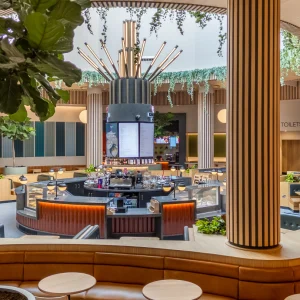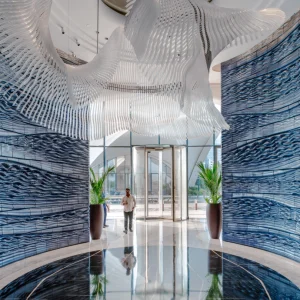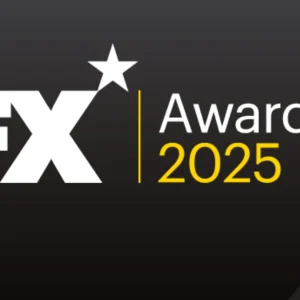Edited by Scarlett walker-hebborn
What has been the most significant improvement in office design over the past 30 years.
One of the most significant improvements in office design over the past 30 years has been the fundamental shift in mindset regarding office spaces. Instead of viewing offices purely as places of business, there is now a strong emphasis on making them feel more hospitable, creating an environment akin to a hotel guest experience or making the place of work more similar to the workforce’s home environment. Designers are increasingly focused on identifying and incorporating unique selling points for each space that align with the business’s brand or identity while making it unique to how their employees work. This approach involves a deeper analysis of the expectations of the business brand and the needs of both the end users and visitors, leading to more personalised and userfriendly environments.
What are the main aesthetic characteristics of a successful office project (or what elements can ruin an otherwise great scheme)?
A successful office project starts with exploring the unique journey, identifying its unique appeal and experiences for guests and employees. For example, in our current project, the Park Academy in Baku, we are transforming a new building that had been put on hold and converting it from a proposed shopping centre into a vibrant business hub. Our design aims to make the space a melting pot for businesses of all types and sizes, fostering growth through collaborative interiors where different businesses can support one another. We are focused on designing interiors that provide a nurturing environment conducive to well-being, productivity and collaboration.
This involves a multi-level approach to accommodate diverse activities and needs, ensuring the areas are flexible, versatile, and functional. Aesthetically, incorporating biophilic elements that enhance the connection with the outdoors is essential, bringing natural light and greenery into the office to create a healthier and more inspiring workspace. With the Park Academy project, outdoor space can be tricky due to extremes of cold, heat and wind. Therefore, transforming the rear of the building into a four-storey winter garden space will give employees an all-year outdoor biophilic experience.
 The Park Academy in Baku, Azerbaijan
The Park Academy in Baku, Azerbaijan
Effective lighting is also crucial, as it sets the right mood across different areas of the space. Poorly lit work areas and collaborative eating or coworking zones need different types and levels of light to create the right work or collaborative environment. Lighting integrated poorly can undermine an office project, creating a lack of cohesive design and disjointed, uninviting spaces.
What is it that clients mostly require/request in their projects?
Clients are looking for value for their money not just in terms of the design but also in the design process. Design thinking and experience that research a project’s needs and anticipate design solutions from the outset gain confidence, assuring the client that they are in safe hands. Good value engineering and thoughtful design from the beginning will positively impact a project’s budget and process.
Has wellness in the office gone too far – do you design for relaxation at work?
Wellness has to be considered as part of each business’s brand aims and its employees’ needs. In some office spaces, wellness has become a fad or a distraction from working. However, true wellness is not a distraction; it aims to bolster employees’ well-being while they work. Having unique selling points (USPs) in a company’s office is integral to enticing employees to a firm, but how often are these USPs fully utilised? Fad wellness has gone too far, while true office wellness has not gone far enough to encompass everyone’s needs.
Gaining insight into the business or office culture starts with understanding the business model so that the business offering itself is at the heart of the wellness effort. For example, if you are in food production, the kitchen is the perfect hub for collaboration and socialising. A business that has family at the heart of its ambitions may provide family care, food halls, marketplaces, or event spaces to socialise, educate and connect. Research and understanding are key.
 The Park Academy in Baku, Azerbaijan
The Park Academy in Baku, Azerbaijan
What current or historical trend since post-war office design has inspired you personally on office design?
The open-plan office trend has been the most influential post-war era trend, breaking down barriers between managers and the workforce to foster more collaboration. This trend has been further enhanced by biophilic design, which reconnects us to nature.
These trends have transformed how we perceive and utilise office environments by fostering cross-pollination between home, office and hospitality, moving away from bland and uninspiring spaces. Today, offices can feel more homely and hospitable, designed to support a variety of activities, making them more dynamic and engaging places to work.
Which exhibitions do you visit for inspiration/research?
There is a plethora of museums in London to find inspiration, whether it’s the fashion exhibitions at the V&A or the galleries and exhibitions at the Tate Modern. Milan Design Week is always a good place to watch for trends and event spaces, whether you’re keeping an eye on the many inspirational media online or walking the aisles of the Salone or the streets of Milan.





